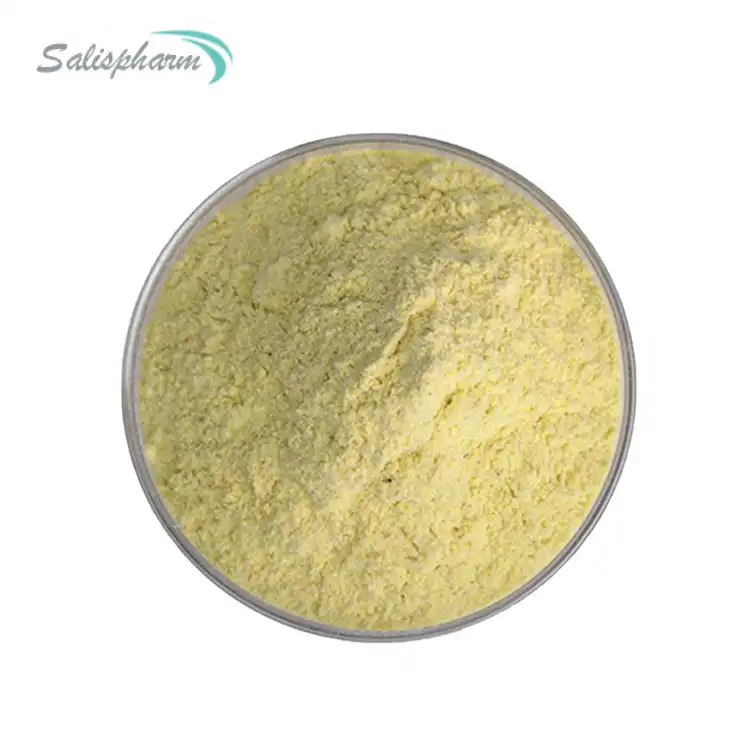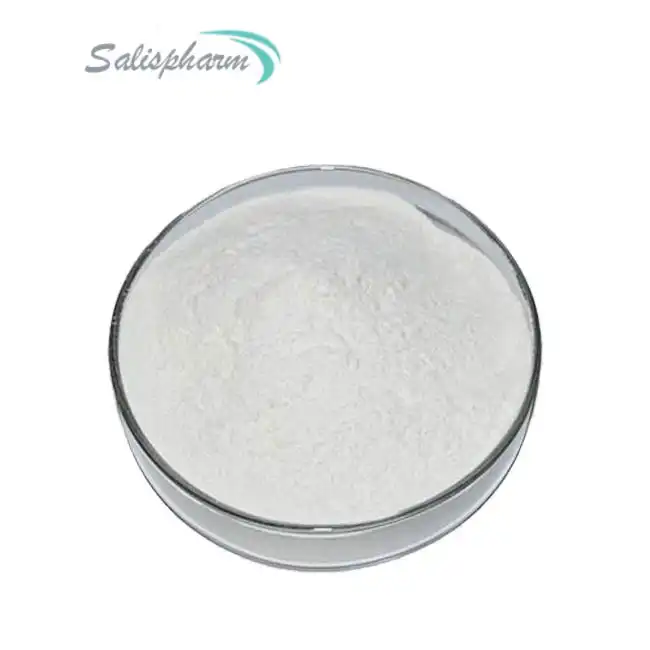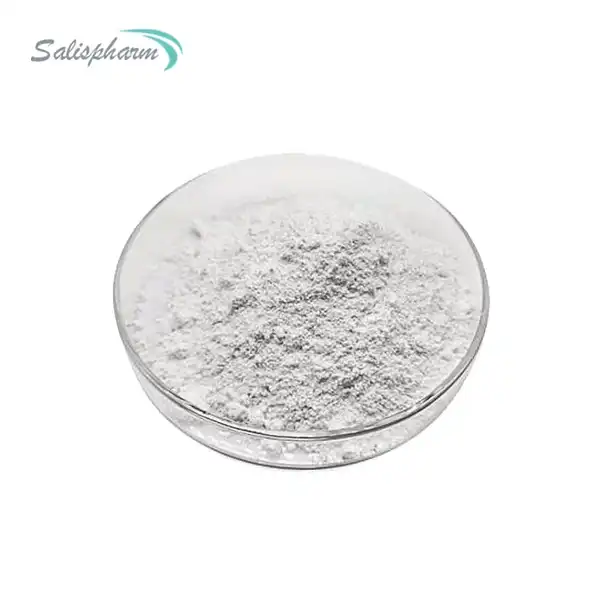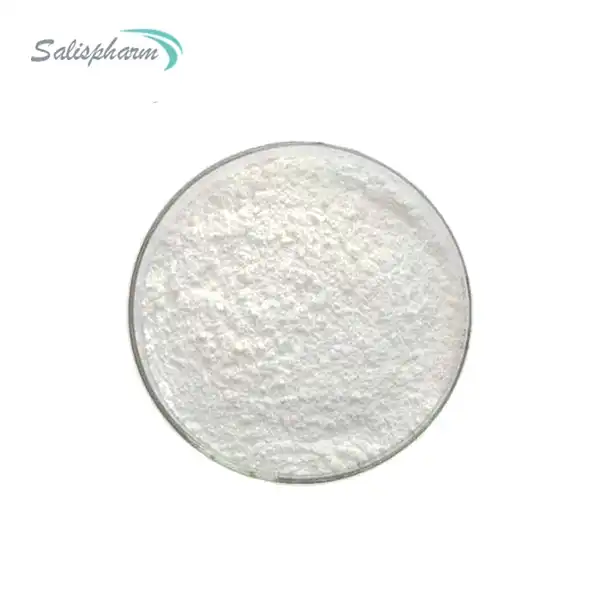Ciprofloxacin is a synthetic antibiotic belonging to the fluoroquinolone class, widely used in veterinary medicine to treat various bacterial infections in poultry. This broad-spectrum antibiotic has proven effective against a range of gram-negative and gram-positive bacteria, making it a valuable tool for maintaining the health and productivity of poultry flocks. However, it's crucial to administer ciprofloxacin powder responsibly and under the guidance of a licensed veterinarian to ensure proper dosage, administration, and withdrawal times.
What Bacterial Infections Can Ciprofloxacin Treat in Poultry?
Ciprofloxacin powder is used to treat a variety of bacterial infections in poultry, including colibacillosis (caused by Escherichia coli), fowl cholera (caused by Pasteurella multocida), and respiratory infections (caused by Mycoplasma and other bacteria). It is also effective against infections caused by Salmonella and Campylobacter species, which are significant concerns in the poultry industry due to their potential for causing foodborne illnesses in humans.
Colibacillosis, caused by E. coli, is a common and potentially severe infection in poultry. It can manifest in various forms, including yolk sac infection, omphalitis (navel ill), air sacculitis, and colisepticemia. Ciprofloxacin is particularly effective against E. coli strains, making it a go-to treatment for colibacillosis outbreaks.
Fowl cholera, caused by Pasteurella multocida, is a highly contagious and often fatal disease in poultry. It can lead to high mortality rates if left untreated, making prompt antibiotic intervention with ciprofloxacin crucial for controlling the spread and reducing losses.
Respiratory infections, such as those caused by Mycoplasma gallisepticum and Mycoplasma synoviae, can result in significant economic losses due to decreased egg production, poor weight gain, and increased mortality. Ciprofloxacin's broad-spectrum activity makes it an effective treatment option for these respiratory issues.
How is Ciprofloxacin Powder Administered to Poultry?
There are several methods for administering ciprofloxacin powder to poultry, with the most common being through drinking water. This method allows for easy mass administration to an entire flock. However, it's crucial to follow proper dosage calculations and mixing instructions to ensure accurate and effective treatment. The drinking water should be replaced daily, and any remaining medicated water should be discarded to maintain potency and prevent bacterial resistance.
Another method is through feed, where the ciprofloxacin powder is mixed with the feed ration. This method is often used for longer-term treatment or prophylactic purposes. It's essential to ensure the ciprofloxacin is evenly distributed throughout the feed to ensure consistent dosing.
Individual injections can also be given, but this method is more labor-intensive and reserved for specific cases, such as treating valuable breeding stock or birds exhibiting severe clinical signs.
Regardless of the administration method, it's crucial to follow the veterinarian's instructions regarding dosage and duration of treatment. Improper dosing or premature discontinuation of treatment can lead to ineffective treatment and the development of antibiotic resistance.
What Precautions Should Be Taken When Using Ciprofloxacin in Poultry?
While ciprofloxacin powder is an effective antibiotic for treating bacterial infections in poultry, it's essential to use it judiciously and under the guidance of a licensed veterinarian. Overuse or misuse of antibiotics can contribute to the development of antibiotic-resistant bacteria, which poses a significant threat to both animal and human health.
Antibiotic resistance is a growing concern in both veterinary and human medicine. The development of resistant strains of bacteria can render antibiotics ineffective, making infections more challenging and costly to treat. To mitigate this risk, ciprofloxacin should only be used when necessary and under the supervision of a veterinarian.
Additionally, it's crucial to follow the recommended withdrawal periods before slaughtering birds or collecting eggs for human consumption to ensure food safety. Ciprofloxacin residues in meat or eggs can pose health risks to consumers, particularly those with compromised immune systems or allergies to fluoroquinolones.
Good biosecurity practices are also essential when using ciprofloxacin in poultry operations. This includes maintaining clean and disinfected facilities, implementing proper quarantine procedures for new birds, and following strict protocols for personnel and equipment movement to prevent the spread of infections.
Alternatives to Antibiotics and Responsible Use
While antibiotics like ciprofloxacin are valuable tools in poultry production, it's essential to explore alternative strategies and prioritize responsible use to combat the growing threat of antibiotic resistance.
One approach is the use of probiotics and prebiotics to promote gut health and enhance the birds' natural defenses against pathogens. Probiotics are live beneficial bacteria that can help maintain a healthy gut microbiome, while prebiotics are indigestible fibers that selectively nourish beneficial gut bacteria.
Vaccination programs are another crucial component of preventing bacterial infections in poultry. Effective vaccines can prime the birds' immune systems to mount a rapid and robust response against specific pathogens, reducing the need for antibiotics.
Additionally, proper nutrition, environmental management, and biosecurity measures play vital roles in maintaining flock health and reducing the risk of infections. Providing a clean, stress-free environment with appropriate housing, ventilation, and nutrition can significantly contribute to the overall well-being and disease resistance of the birds.
In conclusion, ciprofloxacin powder is a valuable tool for managing bacterial infections in poultry, but it must be used responsibly and under the supervision of a veterinarian. By following proper dosage and administration guidelines, adhering to withdrawal periods, and implementing good biosecurity practices, poultry producers can ensure the effective and safe use of this antibiotic while minimizing the risk of antibiotic resistance and ensuring food safety. However, it's crucial to explore alternative strategies and prioritize responsible antibiotic use to combat the growing threat of antibiotic resistance and maintain the long-term efficacy of these valuable medications.
If you are also interested in this product and want to know more product details, or want to know about other related products, please feel free to contact sasha_slsbio@aliyun.com.
References:
1. Blanco, J. E., Blanco, M., Mora, A., & Jansen, W. H. (1997). Serotypes of Escherichia coli isolated from septicaemic chickens in Galicia (northwest Spain). Veterinary Microbiology, 59(2-3), 229-235.
2. Aarestrup, F. M. (1999). Association between the consumption of antimicrobial agents in animal husbandry and the occurrence of resistant bacteria among food animals. International Journal of Antimicrobial Agents, 12(4), 279-285.
3. Bywater, R. J. (2005). Identification and surveillance of antimicrobial resistance dissemination in animal production. Poultry Science, 84(4), 644-648.
4. Diarra, M. S., Silversides, F. G., & Diarrassouba, F. (2007). Impact of feed supplementation with antimicrobial agents on growth performance of broiler chickens, Clostridium perfringens and Campylobacter counts, and antibiotic resistance phenotypes. The Journal of Applied Poultry Research, 16(4), 489-498.
5. Rasheed, M. U., Thajuddin, N., Ahamed, P., Teklemariam, Z., & Jamil, K. (2014). Antimicrobial drug resistance in strains of Escherichia coli isolated from food sources. Revista do Instituto de Medicina Tropical de São Paulo, 56(4), 341-346.
6. World Health Organization. (2017). WHO guidelines on use of medically important antimicrobials in food-producing animals. World Health Organization.
7. Gyles, C. L. (2008). Antimicrobial resistance in selected bacteria from poultry. Clinical Microbiology Reviews, 21(2), 268-279.







